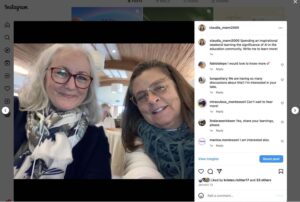In Montessori we talk a lot about becoming like a scientist as we strive for personal transformation. We know that this involves observing, analyzing, hypothesizing, testing, recording, observing again…often over and over before we make assessments or plan a response.
If we are able to live and model that in our practice, I also found myself thinking about how we might give opportunities to our students to do the same. A recent class got me thinking about how we can inspire our students to think like a scientist. Naturally, my thoughts turned to an activity that my students loved: the fossil dig.
There are so many aspects of the dig that makes it a “just right” experience for elementary students. There’s the element of surprise: The wonder and awe when a fossil is unearthed.
But with the right sort of preparation, you can also have the students imagining themselves on a rocky hillside, searching for evidence that fossils may be present and then, preparing the location for a proper dig.

In today’s Freebie, I’ve written up directions for having a simple fossil dig in your school’s backyard…or even inside the classroom if you must. But getting outside in a space set up for the students to discover can be just the thing to tame winter-weary bodies. I would set up a variety of pie pans with various clues as to which ones were laden with fossils and which might not bear any fruit. There would definitely be more than enough for every student or pair of students in the class to have their very own location but there would be extra pans that they could choose to say…”Probably not that one.” But this is optional, so the Freebie includes the basic instructions. If you want more details on a multi-day or week-long study with academic and Cosmic Connections. Send me an email and I’ll see what I can do for you!
The tools needed are minimal and the preparation of the dig sites will be done by the students themselves. You’ll want to “bone up” (pun intended) on how paleontologists prepare the mapping. You might even want to provide some photographs of dig sites.
The hardest part of this activity? Getting the students to slow down and mimic the careful drawing of the site as well as the fossil reveal that real paleontologists must follow so as not to destroy any precious ancient species.
What’s in it for you? Well, this is one of those activities that will bring real joy as you watch, listen, coach, mentor…and simply bask in your students’ excitement of uncovering and discovering real fossils!





